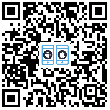

|
我还记得瑞典设计师兼企业家伊夫·贝哈尔第一次向我展示August智能锁的情景。那是多年前,这款产品还没有正式向全球发布。新产品借助经过验证的移动设备和Wi-Fi连接的电子装置,替代传统的金属钥匙和机械锁组合。当时贝哈尔去曼哈顿中城大楼里我的办公室拜访,我得以先睹为快。他拿出智能手机演示智能锁的功能,通过数字形式授权我进入他在加州的海滩别墅,非常轻松,然后手指轻轻一按又撤销了权限。 贝哈尔的这款产品非常出色。如今我住在距太平洋不远的海滨,真能用上他的授权了(伊夫,我想去冲浪了!)。但伊夫自那次拜访以后一直忙于工作。6月13日,他出席了在旧金山现代艺术博物馆举行的《财富》国际设计头脑风暴晚宴,向大家解释他的设计理念如何体现在项目中。 贝哈尔认为,设计应该以人性、人工智能(AI)、设计、体验和速度为本。他设计的看护婴儿机器人Snoo是一款运用AI技术的摇篮床,可以照看新生儿,安抚吵闹的孩子,让父母晚上能睡个好觉。Snoo和电影里的类人机器人很不一样,让之前声称永远不会把孩子交给机器人的父母刮目相看。贝哈尔向设计和时尚杂志《Wallpaper》的总编托尼·钱伯斯透露:“我喜欢这种猫鼠游戏。作为设计师,我们想打破一些好莱坞传递的反乌托邦观念。” 和Snoo相对,顺应老年人需要设计的产品是Elli-Q,主要帮助老年人和外界联系。贝尔哈说:“如果说AI真能提供什么服务,还是在医疗保健领域,即老年人和婴孩,正好是人生两端。”和人们之前预期的不同,有自理能力的人们其实不怎么用得上AI。 上世纪90年代贝哈尔刚刚搬到旧金山湾区,当时微软还是科技业的霸主,苹果公司还在困境中挣扎。“当时没什么人认为重视设计可以成功。”他回忆道。但形势很快就变了。设计师现在是董事会、产品和投资者会议的关键环节。他指出:“产品如果失败,往往不是技术问题,而是设计不过关。”因此对企业来说,设计具有了战略意义。 看看美容行业国际知名品牌欧莱雅,虽然已拥有数以百万的客户,但仍表现得像一家初创公司,并没有死守传统品牌机械地推出产品。贝哈尔曾和欧莱雅合作,设计一系列纹身贴,用智能手机扫描以后,可以提示有没有接受过量太阳照射。如果阳光太强烈,就该用防晒产品了,顺便推销一下欧莱雅的相关产品。 贝哈尔在结束晚宴的活动时表示,要从业务最高层就重视设计还有很多工作要做。他说,并不是所有地方都像湾区一样重视设计。很多公司都错失了机会,尤其在技术公司。“哪个行业准入门槛低,还能化腐朽为神奇?设计师。”他表示。确实让人难以反驳。(365娱乐场) 译者:Pessy 审稿:夏林 ? |
I remember when Yves Béhar first showed me the August smart lock. It was years ago, before the product—which replaces the conventional combination of a metal key and mechanical tumbler with an authenticated mobile device and WiFi-connected electronic unit—was announced to the world. The designer dropped by my office at the Time & Life Building in Midtown Manhattan to give me a sneak peek. He demonstrated its utility by using his smartphone to digitally grant me access to his California beach house, right then and there. With a tap of his finger, he revoked it. Good thing he did. Today I live a short walk from the Pacific Ocean and could actually take him up on the offer. (Surf’s up, Yves!) But Béhar has been rather busy in the years since that visit, and he appeared at a Fortune Brainstorm Design dinner at San Francisco’s Museum of Modern Art on June 13 to highlight how some of his projects demonstrate the kind of design he hopes to see in the world. We need design that is driven by humans, artificial intelligence, design, experience, and speed, he argued. His Snoo, “a robot that takes care of your baby,” is an AI-equipped bassinet that coddles and calms an agitated newborn so a parent can get a good night’s sleep. It’s a far cry from the humanoid robots seen on the silver screen and a rebuke to a parent who says that they’d never hand their child to a bot. “I love this game of cat and mouse,” Béhar told Wallpaper’s Tony Chambers. “As a designer, we want to contradict these dystopian Hollywood notions.” At the other end of the spectrum was Elli-Q, a device meant to cater to the elderly by connecting them with the outside world. “If you really think about who AI is going to serve, it’s healthcare—the aging population, babies, people on both ends of the spectrum,” Béhar said. And not, as we’ve come to expect, able-bodied people in between. When Béhar first moved to the San Francisco Bay Area in the 1990s, at a time when Microsoft reigned supreme in the tech industry and Apple was faltering, “being design-driven was not seen as a path to success,” he said. That’s changing, and quickly. Designers are a key part of board, product, and investor meetings. “When technology fails, it’s not because of the technology,” he said. “It’s because of the design.” All the better to make it a more strategic part of the organization. Consider L’Oréal, which despite its millions of customers is trying to act like a startup by not resting on its brand to move product. Béhar worked with the company to design a set of transfer tattoos that can be scanned by a smartphone to reveal whether you’re getting too much sun—an empirical prompt to apply sunscreen, ideally L’Oréal’s. Béhar closed out the night by arguing that there’s more work to be done to incorporate design into the highest echelons of business. Not every part of the world is as progressive with this as the Bay Area, he said. It’s a missed opportunity, especially when it comes to technology. “Who best to take a low barrier to entry and turn it into something magical and special?” he asked. “Designers.” It was difficult to disagree. |
最新文章




